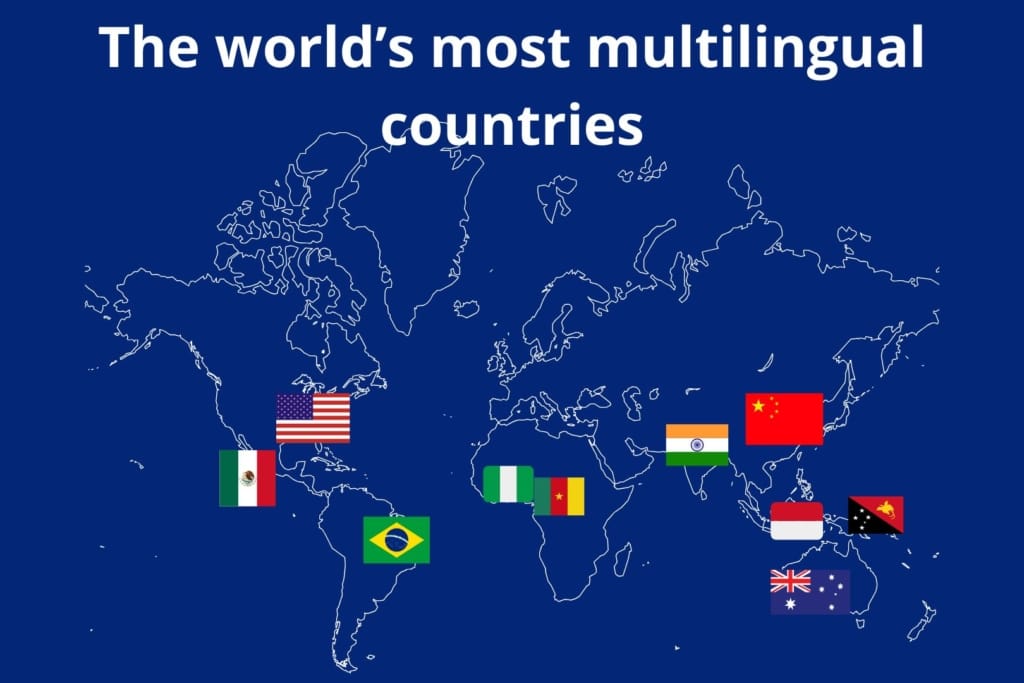Is it possible to approach Italian lessons—or any other language classes—from a business perspective? Today, we’ll see that it is not only possible but also highly profitable and quality-enhancing.
Let’s dive into the story of Piero, an Italian teacher who decided to change his perspective and turn his language classes into his personal brand. This is an inspiring journey that proves how a simple shift in mindset can make anything possible.
We’ll explore how this young Argentinian of Italian descent took advantage of technology and made a few strategic changes to transform his Italian lessons into a thriving business. Plus, we’ll see how Piero’s Italian lessons have become highly sought after thanks to outstanding student reviews. In short, we’ll prove that business and quality don’t have to be opposites.
Get ready for a story that just might inspire you!
Italian lessons: Piero’s path to success
Piero didn’t start teaching Italian by chance, but rather by destiny. This young entrepreneur was born in Buenos Aires into a family of Italian immigrants—something quite common in Argentina, home to one of the largest Italian communities in the world.
From an early age, Piero learned Italian before even speaking Spanish. At home, his parents, grandparents, and uncles all spoke Italian, making it his first language rather than a second one.
Of course, knowing Italian is one thing, but teaching it is another. That’s why Piero was clear about his future from a young age—he wanted to be a teacher, specifically an Italian teacher.
When the time came, he studied languages at university and earned his degree as a language instructor.

The challenge: A teacher’s salary isn’t enough
Things were going relatively well for Piero. After graduating, he found work at a high school, teaching Italian as an elective subject. He received a modest salary, which, in many cases, wasn’t enough to make ends meet. To improve his situation, he needed to take the next step.
Many of his fellow teachers took on private tutoring jobs in the afternoons.
- The math teacher ran a small classroom in his garage.
- The language teacher hosted students at home for tutoring sessions.
- The English teachers worked at a local academy, giving classes to adults.
Seeing this, Piero decided to find a second job at an Italian language academy. However, he quickly realized that the pay was even worse than at the high school, and the academy’s strict rules didn’t suit him.
So, he tried offering private Italian lessons instead.
The struggles of private Italian lessons
At first, Piero’s students came from his own high school classes—those who needed extra help to improve their grades. For a small fee per lesson, these students could get the support they needed to pass their exams.
However, he soon ran into several major challenges:
- Lack of space – He lived with his parents, and there was no proper place to host students in their small Buenos Aires apartment.
- Constant noise – The house was always full of people, from family members to visiting friends. There was never a moment of peace.
- No quiet study environment – With kids shouting and guests coming and going, concentration was nearly impossible.
So, Piero had to look for alternatives. He tried everything:
- Renting a small office from a friend, but the rent was higher than what he earned.
- Teaching in a café, but the noise and distractions made it unworkable.
- Holding lessons in a park, which worked until the rain ruined a session.
Nothing seemed to work!
“I’ll go to my students’ homes”—Another bad idea
Then, Piero thought of teaching in his students’ homes. At first, it seemed like a great idea—no rental costs, and the students’ homes were quieter. But soon, another major issue arose: time and transportation.
Sitting at home with a calculator in hand, Piero did the math. He charged around €5 per hour. To earn a decent income, he needed to teach at least 5 hours per day. This seemed possible: Start at 2 PM and finish at 7 PM. But he didn’t account for one big problem—Buenos Aires’ terrible traffic!
Each trip between students’ homes took 30 to 45 minutes, reducing his daily class count. In reality, he could only fit in two lessons per day, which meant barely making any money. Piero was about to give up on his dream… but then, he made a discovery that changed everything.
What was Piero’s breakthrough? Stay tuned to find out how he transformed his Italian lessons into a successful business!
Online Italian lessons: The discovery that changed Piero’s life
One day, Piero was chatting with Cristina, one of his closest friends. They had been university classmates, but while Piero taught Italian, Cristina was a French teacher. Despite their strong friendship, they rarely talked about work—but luckily, this time they did.
With growing concern, Piero confided in Cristina about his financial struggles. He was facing a professional crisis because, although he loved teaching, the money just wasn’t enough. He wanted to become independent, rent an apartment, and live comfortably from his job. However, his salary at the high school was too low, and his private Italian lessons weren’t generating enough income.
That’s when Cristina revealed her secret: she had quit teaching at traditional institutions and switched to online language classes, tripling her income. She had joined an international online academy, where she taught French from home, earning around €20 per hour and teaching about 8 hours per day.
This was three times what Piero was making between his salary and private Italian lessons combined!
The digital leap was easier than he expected
Cristina offered to help Piero transition into the world of online teaching. To sign up, he only needed:
- His teaching certificates
- A short résumé
- His personal details
- A profile photo
That was it!
The language academy responded in just 48 hours, and from that moment on, Piero’s life changed forever.
To start teaching, he had to:
- Choose the subject he wanted to teach—of course, he selected Italian lessons.
- Select the student level and age group—he opted for basic and intermediate levels and preferred teaching children and teenagers.
- Write an engaging profile description—Cristina advised him to focus on the parents, since they were the ones hiring the teacher.
With a few final touches, a good-quality profile photo, and a starting rate of €10 per hour, Piero was officially part of the online teaching world.
Every beginning is tough—really tough!
But don’t think success came overnight. Weeks passed without a single student. Like many online platforms, language teaching websites use a rating system based on stars and reviews. Just like on any commercial site, the top-rated teachers appear first.
Piero wasn’t just competing with local Italian teachers in Argentina—he was competing with Italian teachers from all over the world. And of course, who do students trust more for Italian lessons? Those who are actually from Italy!
As a brand-new teacher with zero reviews, Piero’s profile was buried deep in the listings. To find his profile, potential students would have to scroll through pages and pages of Italian teachers. As expected, this phase was extremely frustrating.
But Cristina had warned him—her first student didn’t come until two months after signing up. So, Piero waited patiently, though this time, he wasn’t just sitting around.
Preparation & passion: Piero’s formula for success
If Piero was going to compete in the big leagues of online Italian classes, he knew he had to stand out. And more importantly, if he wanted to build a name for himself and earn money, he needed to add a unique touch to his lessons.
He didn’t waste the waiting period. Instead, with newfound passion, he designed his lessons and developed a simple yet engaging teaching method. He created two types of lessons:
- For young children – He incorporated fun educational tools like drawings, puppets, and interactive materials.
- For teenagers – He knew that most of them were taking lessons because their parents forced them. So, he turned his Italian classes into an enjoyable experience.
Understanding the challenges of teaching teenagers, Piero researched their favorite topics and made technology his biggest ally.
What happened next? Let’s discover how Piero skyrocketed to success in the world of online Italian lessons!

Technology, social media, and a “meta-world”: The pillars of Piero’s Italian lessons
Piero was sure about one thing: teenagers would be his main group of students. He had no proof, but no doubt either. High school students needing extra Italian lessons would be the primary audience for his profile. To attract these students, he designed engaging and dynamic lessons, incorporating:
- Italian music
- Popular Italian influencers
- Top Italian celebrities
- Movies, TV shows, game shows, and more
His goal? To give his Italian lessons a unique and modern twist.
At the same time, Piero created profiles on the most popular social media platforms among teenagers. He filled them with fun, educational content that was entertaining, engaging, and easy to follow.
But he didn’t stop there.
He knew that to keep his students truly engaged, he needed cutting-edge tools. That’s when he discovered Talkao and its translation apps.
Italian lessons enhanced by mobile apps & tech tools
As part of his lesson plan, Piero made technology the foundation of his teaching strategy.
- He found that Talkao’s translation apps offered modern, easy-to-use tools that his students would love.
- He trained himself in using Talkao Translate and its camera translator, integrating them into his daily lessons.
- He explored the Talkao dictionary app, incorporating fun challenges that students—with their parents’ permission—could share on Piero’s social media profiles. This allowed them to feel part of a global community—a dream for any modern teenager!
- Finally, he came up with a brilliant idea: a scavenger hunt using augmented reality (AR) translation.
His students would use their phones to scan everyday objects, translating their names into Italian. The resulting word lists would then be used in class.
Everything was set! But Piero wasn’t done yet…
Entrepreneurial vision: The key to Piero’s success in Italian lessons
With such a detailed plan, success was inevitable.
Just a few weeks after joining the platform, Piero’s profile was flooded with requests. Parents and teenagers from all over the world wanted to book his Italian lessons. His first students gave him top ratings, and their positive reviews skyrocketed his ranking on the platform.
Soon, the website itself offered him a business opportunity—the chance to run a teaching channel, allowing him to teach multiple students at the same time instead of one-on-one lessons.
But Piero’s journey didn’t stop there.
Tapping into his hidden entrepreneurial side, he turned his Italian lessons into a personal brand. He launched a streaming channel for live Italian lessons. Moreover, he set up communication channels for his students, their parents, and even their school teachers.
Italian lessons beyond the classroom
With his mind open to endless possibilities, Piero started a new project.
He teamed up with a writer and a designer to create an interactive Italian learning book for children. This book would help preschoolers learn Italian in a fun and engaging way.
And that’s not all.
Piero invited his most advanced students to collaborate on the first-ever Italian short story anthology written by students. What is his idea? To connect teenagers worldwide through their shared passion for Italian.
Now, Piero is not only making a living teaching Italian—he has transformed his ideas into groundbreaking projects, balancing business vision with top-quality education.
Maybe Piero’s story and his Italian lessons will inspire you too!

















